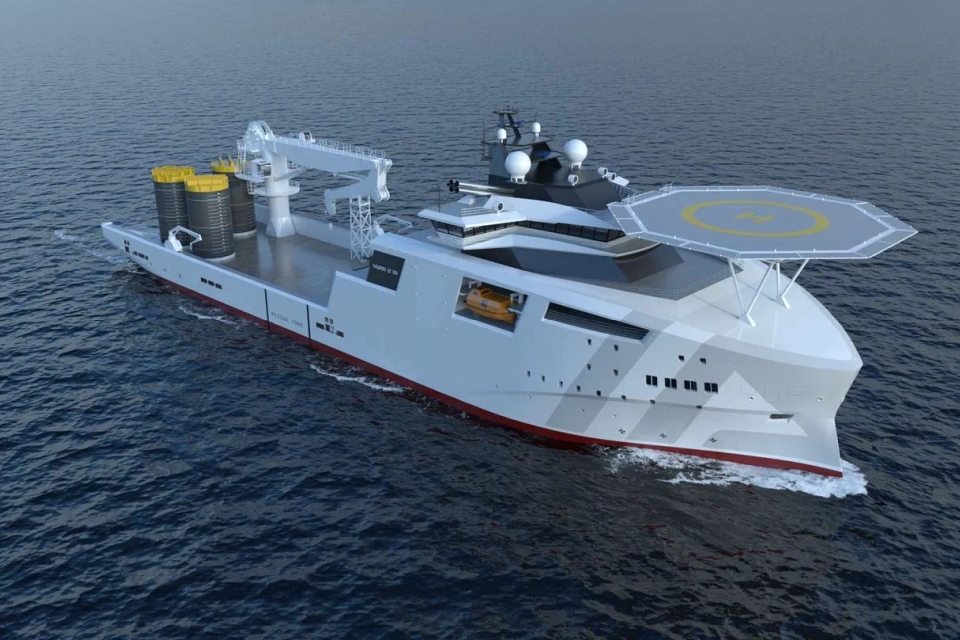Blåvinge, an offshore wind partnership between Fred. Olsen Seawind, Hafslund and Ørsted, has taken the initiative for a pilot project under the Green Shipping Programme. The goal is to realise zero-emission installation vessels powered by green ammonia for the installation of floating offshore wind turbines.
Green Shipping Programme (GSP) is a partnership programme between private and public actors whose goal is to contribute to Norway developing the world’s most efficient and environmentally friendly shipping. Blåvinge heads the pilot for a new project in GSP together with DNV and a number of other actors.
The pilot aims to explore whether installation vessels for floating offshore wind, and in particular anchor handling vessels, can use green ammonia as an energy carrier for maritime operations.
Also read: The safeguards needed to mitigate the risks of ammonia as fuel
Largest single emission item in Norwegian waters
‘Installation and maintenance of the offshore wind farms requires extensive use of offshore vessels and especially anchor handling vessels,’ says Erlend Gjelstad Jakobsen of Blåvinge. ‘100 per cent emission reduction can only be achieved through carbon-neutral fuels, such as green ammonia. If we succeed with the project, it means that the installation of offshore wind turbines can be done with significantly lower greenhouse gas emissions than what is possible today.’
Emissions from offshore vessels currently account for the largest single emission item in Norwegian waters. This is due both to the high level of activity on the Norwegian continental shelf, but also to the fact that these operations are energy-intensive (emissions per nautical mile).
Local value chains for ammonia
Initially, the participants in the Green Shipping Programme will conduct a feasibility study that involves assessing technical and economic feasibility. In addition, framework conditions and possible barriers for local value chains for ammonia will be analysed.
DNV’s Magnus Eide, project manager for GSP: ‘Norway has particularly favourable conditions for the production and distribution of green ammonia, because we have access to clean, electric power and we have leading expertise in the production of ammonia. In addition to realising emission reductions for floating offshore wind in Norway, we see a potential for further use and application of the technology in the Norwegian and international offshore industry.’
Also read: LR, SDARI, MAN & MSC to develop ammonia-fuelled container ship
Could be relevant for Utsira North
On 22 June, Blåvinge gathered the pilot participants for a start-up meeting in Oslo. Although the work is in an early phase, the participants have ambitions for the project to enable the use of green ammonia for anchor handling vessels in the installation and operation phase of Blåvinge’s floating offshore wind project at Utsira Nord.
‘Blåvinge brings together three of the Nordic region’s largest renewable energy companies to develop offshore wind in Norway,’ states Jakobsen. ‘Collectively, we have extensive experience in working to reduce emissions in production processes and develop more sustainable industrial standards. In addition to exploring solutions such as sustainable steel, recycling and reuse of turbines, it is also absolutely essential to reduce emissions related to installation and maintenance. If we succeed with this pilot, it will be a solid contribution that can make Utsira Nord the world’s most sustainable floating offshore wind project.’
In addition to Blåvinge, participants in the project are Yara, Karmsund Havn, Azane, Wärtsilä, Norwegian Maritime Directorate, ABB, DNB, Corvus Energy, Vard, Amon Maritime, and DNV.
Picture: ARD 2 18 with ZeroClass design, specialized anchor handling vessel for zero emission operation of floating offshore wind turbines (illustration by Vard Design AS).
Also read: EUR 3 million grant for floating green hydrogen/ammonia project








